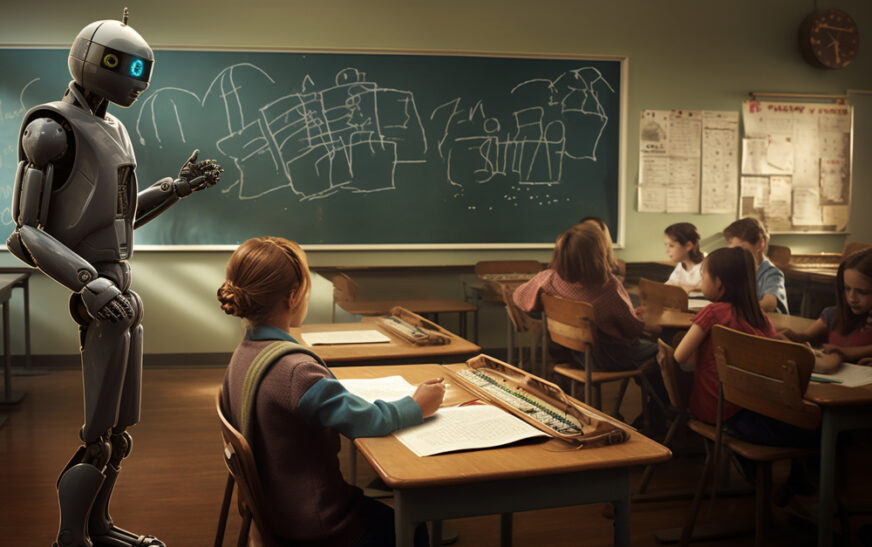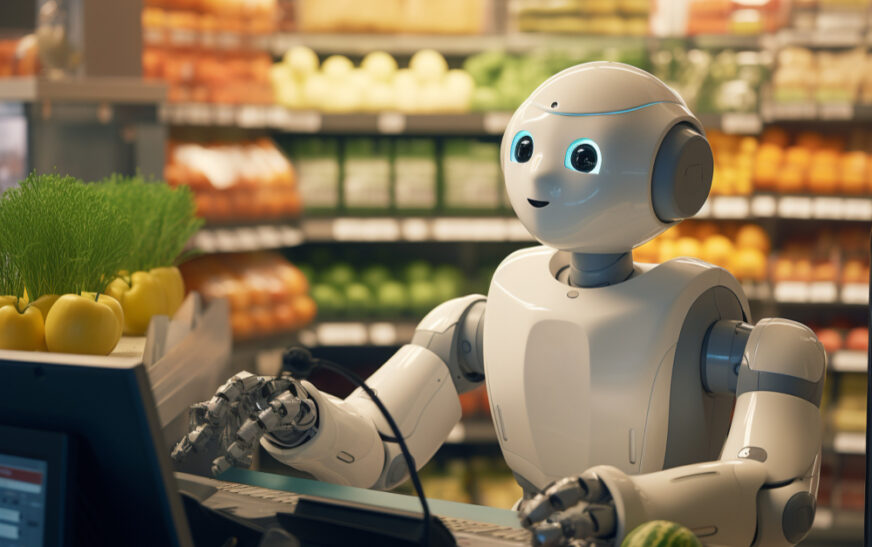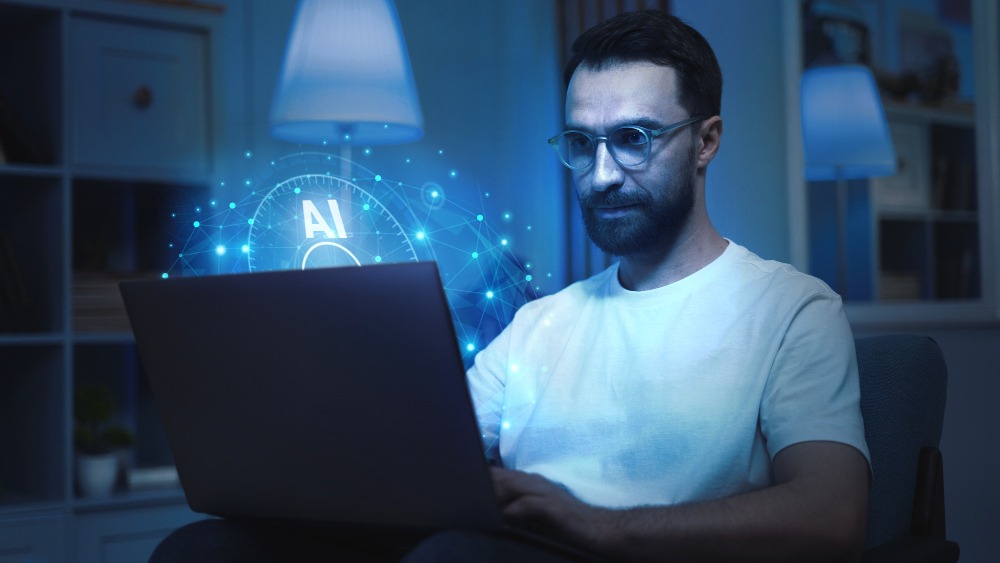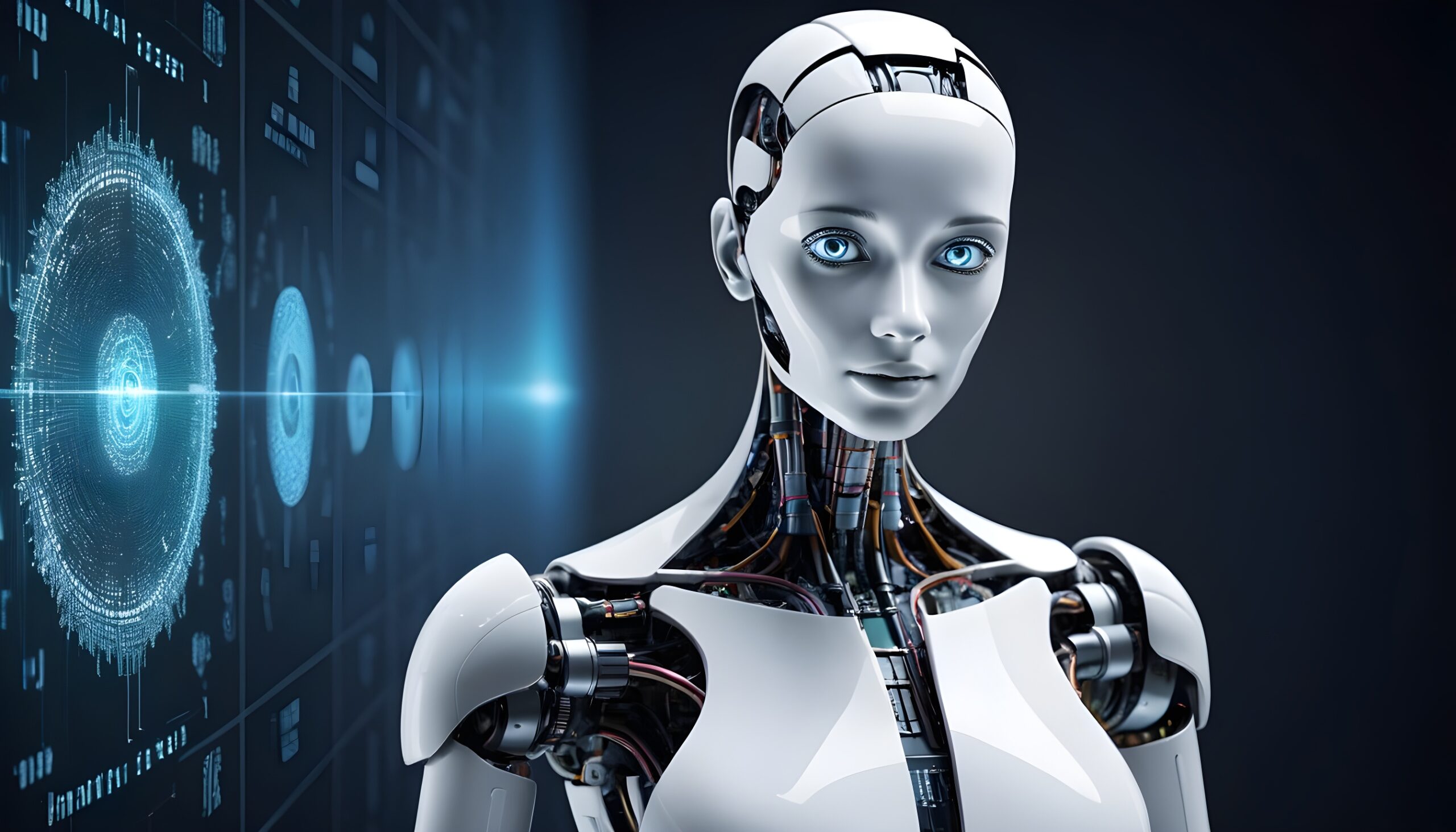Introduction
The classroom of the future – a scene straight out of science fiction with robots leading discussions and grading essays? While Artificial Intelligence (AI) is making significant strides in various fields, the complete replacement of human teachers by robots in 2024 classrooms is highly unlikely.
This blog delves into the evolving role of AI in education, explores the strengths and limitations of AI-powered teaching assistants, and examines the irreplaceable value human teachers bring to the learning experience.
AI in Education: A Powerful Tool for Learning
AI has the potential to be a powerful tool for enhancing education in several ways:
- Personalized Learning: AI algorithms can analyze student data, learning styles, and performance to personalize instruction and provide targeted support. This allows students to progress at their own pace and focus on areas where they need the most help.
- Adaptive Learning Platforms: AI-powered platforms can adjust the difficulty level of learning materials based on student performance, ensuring students are challenged appropriately and not left feeling overwhelmed or bored.
- Automated Grading and Feedback: AI can automate tasks like grading multiple-choice questions and providing basic feedback on short writing assignments. This frees up teachers’ time to focus on providing more personalized feedback and one-on-one interactions with students.
- Virtual Tutors and Language Learning Assistants: AI-powered virtual tutors can provide additional practice and support to students outside of class hours. They can also be particularly helpful in language learning, offering pronunciation practice and conversation simulations.
- Engaging Learning Experiences: AI can be used to create interactive simulations, educational games, and other engaging learning experiences that can make learning more fun and effective.
AI Assistants: Can Robots Replace Teachers?
Despite the potential benefits of AI in education, some may wonder if AI-powered robots will eventually replace human teachers altogether. Here’s a closer look at the limitations of AI in the classroom:
- Lack of Emotional Intelligence: AI robots currently lack the emotional intelligence and social skills that are crucial for effective teaching. They cannot build rapport with students, create a positive classroom environment, or address the emotional needs of students struggling with the material.
- Limited Ability to Adapt: AI systems are programmed to follow specific instructions and may struggle to adapt to unexpected situations that arise in a classroom setting. Human teachers can adjust their teaching style on the fly based on student needs and classroom dynamics.
- The Value of Human Interaction: The human connection between teachers and students is essential for fostering a love of learning, inspiring students, and encouraging critical thinking. AI robots cannot replicate the complex social and emotional interactions that are crucial for a well-rounded education.
- The Importance of Role Models: Teachers serve as role models for students, providing guidance and support beyond academics. AI robots cannot replace the positive influence and mentorship that human teachers offer.
The Irreplaceable Value of Human Teachers
While AI can be a valuable tool in education, human teachers remain irreplaceable. Here’s why:
- Expertise and Passion: Experienced teachers possess a deep understanding of their subject matter and a passion for sharing that knowledge with students. They can explain complex concepts in a clear and engaging way, fostering a love of learning in their students.
- Building Relationships: Teachers develop relationships with their students, recognizing their individual needs and providing encouragement and support. This nurturing environment allows students to thrive both academically and emotionally.
- Critical Thinking and Problem-Solving: Effective teachers encourage critical thinking, problem-solving skills, and creative expression in students. They can guide discussions, create opportunities for debate, and facilitate learning that goes beyond simple memorization.
- Adaptability and Flexibility: Teachers can adapt their teaching methods based on the needs of their students and the dynamic classroom environment. They can identify learning gaps, adjust lesson plans accordingly, and provide targeted interventions.
- Social Development and Emotional Support: Teachers play a vital role in students’ social and emotional development. They help students navigate social interactions, build self-confidence, and deal with emotional challenges.
The Future of Education: A Collaborative Approach
The future of education is likely to see a collaborative approach where AI and human teachers work together to optimize learning. AI can handle routine tasks and provide personalized support, while teachers focus on the more human aspects of teaching, such as fostering creativity, building relationships, and inspiring students.
Here are some potential scenarios for the future of AI-powered classrooms:
- AI-powered tutors provide supplemental instruction and practice outside of class time, allowing teachers to focus on small-group instruction and personalized learning.
- Adaptive learning platforms personalize the learning experience for each student, ensuring they are challenged appropriately and make continual progress.
- AI-powered feedback systems offer students immediate feedback on their work, helping them identify areas for improvement.
- AI-powered virtual assistants support language learning by providing pronunciation practice, conversation simulations, and personalized feedback.
- Teachers utilize AI-powered tools to create interactive simulations, educational games, and engaging learning experiences that cater to different learning styles.
Optimizing the Use of AI in Education
To maximize the benefits of AI in education, here are some key considerations:
- Focus on Ethical Development: AI educational tools should be developed and implemented with ethical considerations in mind. Issues like student data privacy, bias in algorithms, and the potential for AI to exacerbate educational inequalities need to be addressed.
- Teacher Training and Support: Teachers need proper training on how to effectively integrate AI tools into their teaching practices and leverage them to enhance student learning.
- Equity and Accessibility: AI educational tools should be developed and utilized in a way that promotes equity and accessibility for all students, regardless of socioeconomic background or learning needs.
Conclusion: AI and Teachers: Partners in Education, Not Replacements
The future of education is not about robots replacing teachers, but rather about AI tools becoming valuable assets that complement and enhance the irreplaceable role of human teachers. By leveraging the strengths of both AI and human expertise, we can create a more personalized, engaging, and effective learning experience for students of all ages.





















